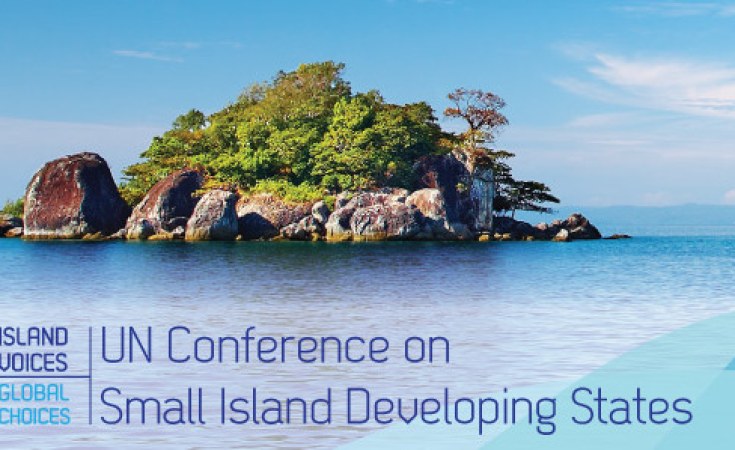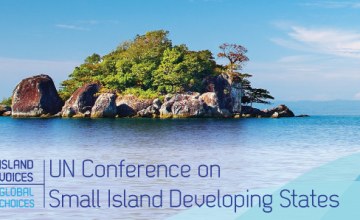I was born in Canchungo, in the northwestern part of Guinea-Bissau. Images of a beautiful canvas of green landscape crisscrossed by abundant waterways, thick forest, vast expanses of mangroves, pristine islands and coastlines, teeming with rich marine life, remain etched in my memory. Today, erratic weather conditions, declining rainfall, rising sea levels and other phenomena are changing the landscape, threatening the livelihood of fishermen and farmers, and calling into question the future of much of my country.
With close to 80 small islands stretching along its coastline, Guinea-Bissau is one of six Small Island D eveloping States (SIDS) in Africa along with Cape Verde and São Tomé and Principe in the Atlantic Ocean; and Comoros, Mauritius and Seychelles in the Indian Ocean. African SIDS tend to be overlooked, and yet they are effectively ‘subsidizing’ the global cost of managing climate change. Although they account for less than 1% of global carbon emissions, the costs they bear are hugely disproportionate.
Often referred to as an undifferentiated group, African SIDS are in reality quite diverse. In economic terms, Cape Verde, Mauritius and Seychelles, classified as middle-income countries, fare better than Comoros, Guinea-Bissau, São Tomé and Principe, which rank among the Least Developed Countries (LDCs). Nonetheless, they share similar vulnerabilities to external shocks because of their heavy reliance on energy and food imports, the limited diversification of their economies, and their large public and external deficits. Given these constraints, how can they effectively combat climate change and mitigate its effects?
The good news is t hat African SIDS are at the frontline of efforts aimed at finding innovative solutions to address the challenges brought about by climate change. They are taking steps to harness and unleash the potential of their marine and coastal resources. They are shifting to cleaner, smarter and sustainable technologies and solutions. In other words, they are the pioneers of the ‘Blue Economy’, a concept that is turning climate challenges into opportunities.
Success stories abound
The Cabeólica wind power project in Cape Verde was set up in 2009 in an effort to reduce the country’s energy import bill. Today, its four wind farms generate 18% of total electricity production, making Cape Verde a world leader in wind power and a model for public-private partnership. The photovoltaic plant in La Feme, Mauritius, which began operations in February 2014, was set up in response to growing energy demands. The plant is expected to produce about 24 GW hours of clean energy while saving 15,000 tons of CO2 emissions every year.
The aquaculture sector is taking off in Seychelles, with the financial support of the Government to increase the production of tuna fish - 70% of which is exported. Seychelles is also boosting its tourism industry by developing cruise-ship tourism and maritime archaeological tourism as new and environment-friendly niches. In June 2013 it launched its first wind farm on reclaimed land in Port Victoria, which is now supplying more than 2,100 homes with electricity and saving 1.6 million litres of fuel per year. The project, implemented in collaboration with the United Arab Emirates, is a model of South-South partnership.
As we celebrate these success stories, we need to redouble efforts to help African and the rest of the world’s 52 SIDS sustain their fight to combat climate change, build their adaptive capacities, and promote the use of existing and new knowledge and innovations. Amidst a rapidly transforming development landscape, African SIDS need to find new ways to galvanize their push for a ‘Blue Economy’, including by tapping into the African financial markets.
As you read this, I will be in Apia, Samoa, attending the Third International Conference on Small Islands and Developing States. I intend to share African SIDS stories and to make the case for high level of international support to their efforts. I will also be actively engaged in a high level dialogue, to be held on the sidelines of the Climate Summit in New York in early September, where we plan to help African SIDS chisel their specific concerns into robust positions in the lead up to climate change negotiations in Lima, in December.
Make no mistake. The threats of climate change are very real for SIDS.Tuvalu, a small coral atoll nation in the Pacific, could disappear in a matter of decades unless urgent actions are taken to stem rising sea levels. A similar fate awaits a large number of the 115 islands in the Seychelles, and countless other small islands around Africa and elsewhere.
Missed opportunities can signal a downward spiral of poverty, disease and multiple vulnerabilities. Africa’s fishers, farmers and pastoralists cannot stand by as climate impacts continue to wash away their dreams and erode their confidence, values and livelihoods. They are waiting with bated breath for real solutions. A new UNICEF study predicts that by the turn of the century nearly half the world’s children under 18 will be African. A good number of these children will live in small island developing countries. We must act now to shape the lives of present and future generations.



